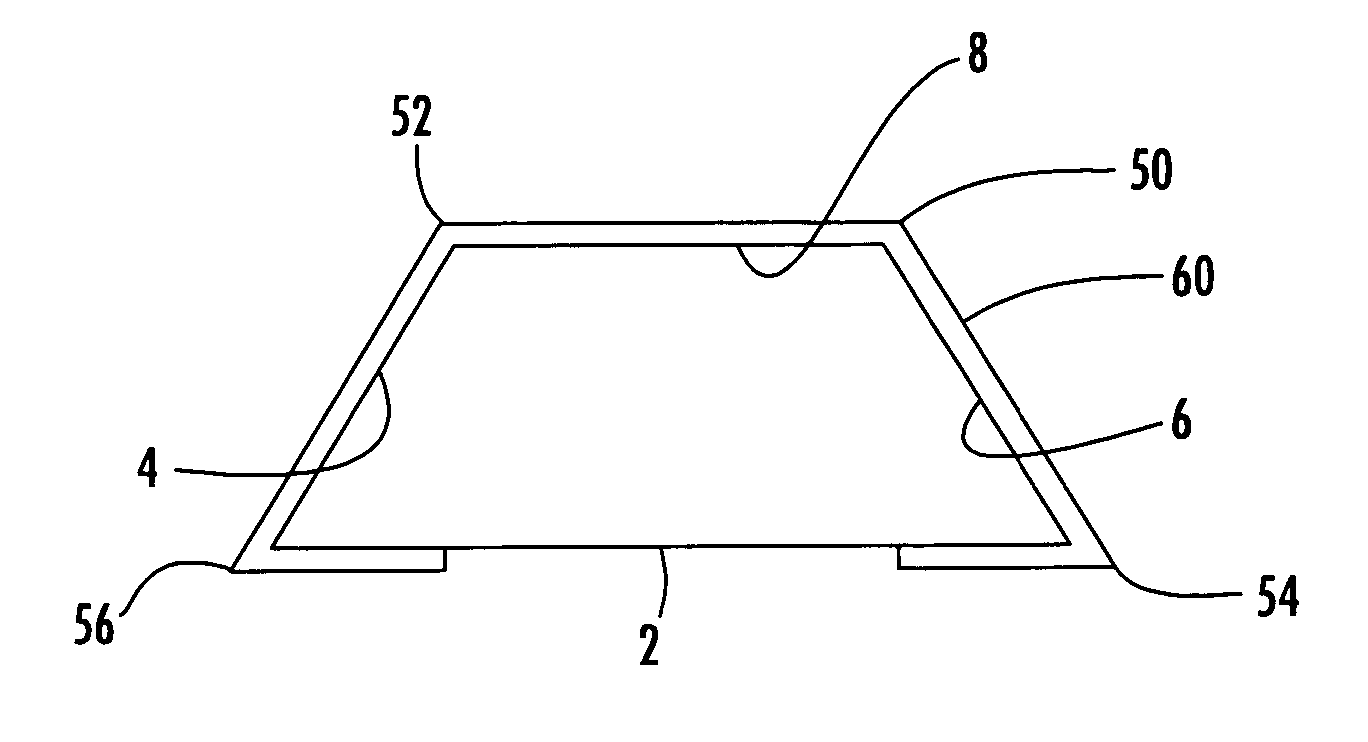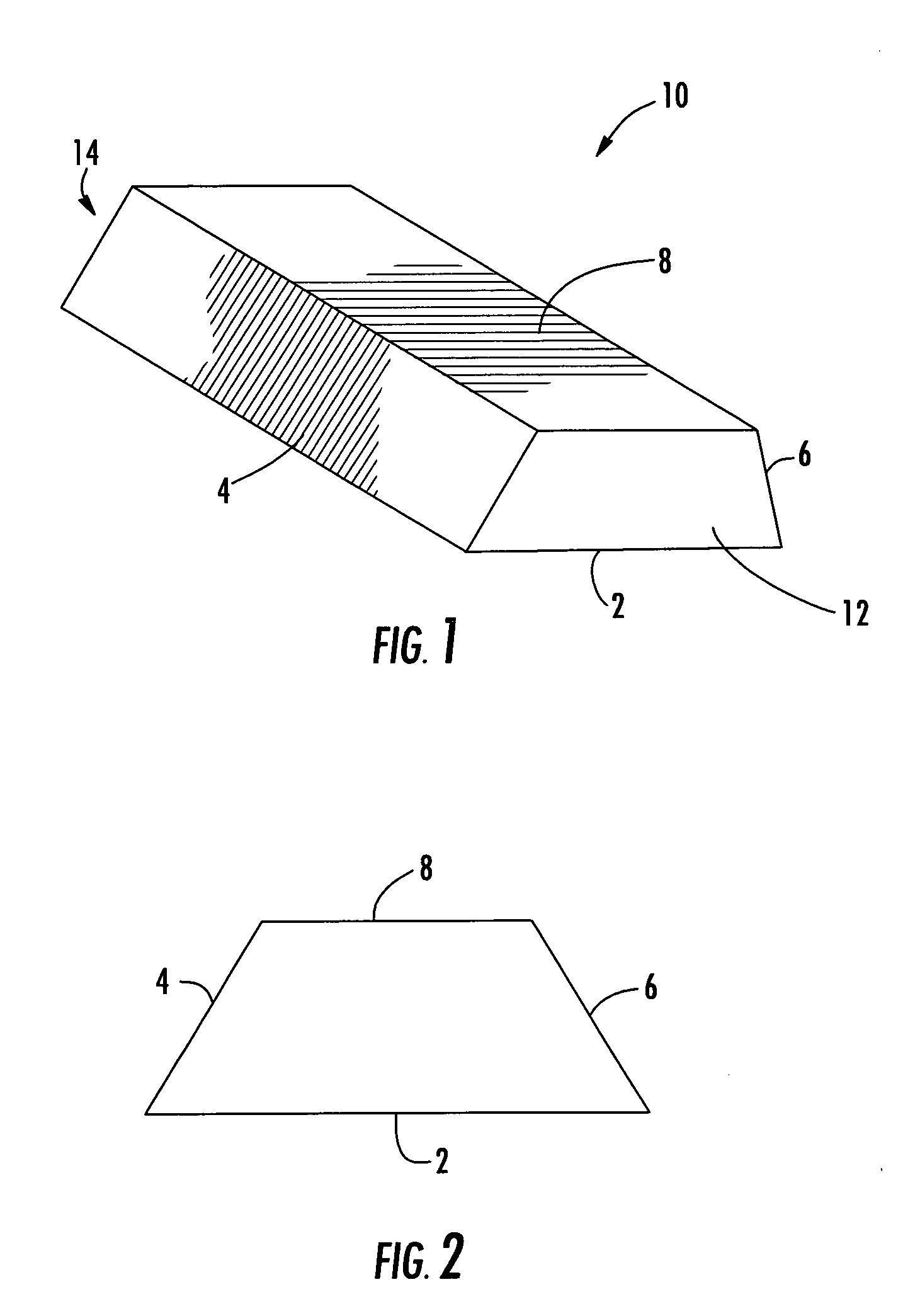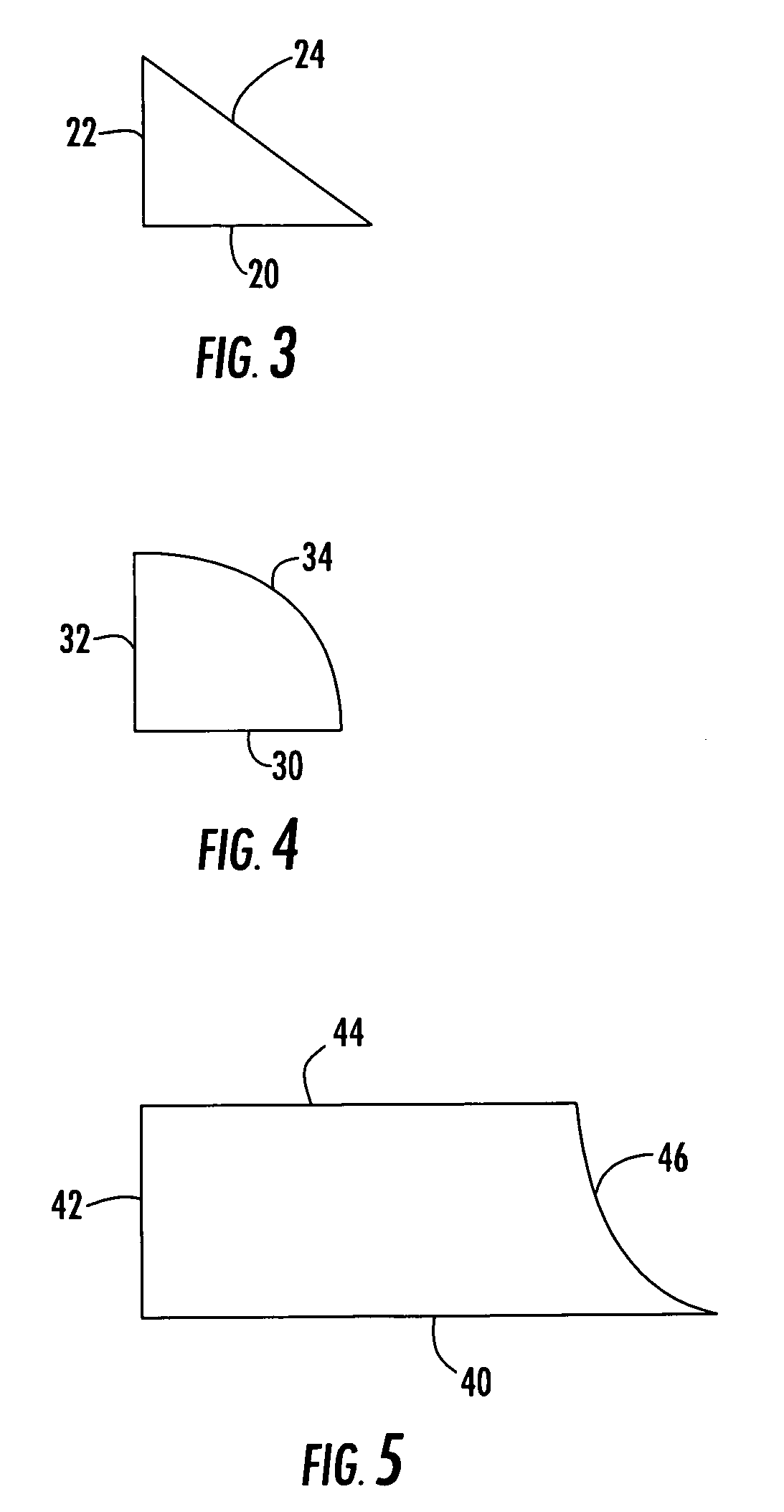Rustication for architectural molding
a technology for molding and architectural forms, applied in the field of molds and molds, can solve the problems of time-consuming, difficult to manufacture, and difficult to settle, and achieve the effect of difficult manufacturing and difficult manufacturing
- Summary
- Abstract
- Description
- Claims
- Application Information
AI Technical Summary
Benefits of technology
Problems solved by technology
Method used
Image
Examples
Embodiment Construction
[0022] Generally, the present invention concerns rustication forms or moldings having covering (overlay or wrapping) that alleviate problems associated with concrete slab curing. The present invention also concerns methods for forming rustication in concrete walls. More specifically, the present invention comprises the rustication form substrate, wherein all or portions of the surface exposed to the curing concrete is covered with covering or layering, but only portions of surfaces not exposed to the curing concrete is covered.
[0023] Before the concrete is poured, rustication forms are laid down on the formation surface. Rustication forms come in a variety of sizes and shapes as known in the art. Some examples include chamfers, quarter rounds, half rounds, coves, and polygons, which refer generally to the shape of the cross sectional areas of such rustication forms. Generally, a rustication form has one or more surfaces that are not exposed to the poured concrete, and one or more s...
PUM
| Property | Measurement | Unit |
|---|---|---|
| area | aaaaa | aaaaa |
| shape | aaaaa | aaaaa |
| time | aaaaa | aaaaa |
Abstract
Description
Claims
Application Information
 Login to View More
Login to View More - R&D
- Intellectual Property
- Life Sciences
- Materials
- Tech Scout
- Unparalleled Data Quality
- Higher Quality Content
- 60% Fewer Hallucinations
Browse by: Latest US Patents, China's latest patents, Technical Efficacy Thesaurus, Application Domain, Technology Topic, Popular Technical Reports.
© 2025 PatSnap. All rights reserved.Legal|Privacy policy|Modern Slavery Act Transparency Statement|Sitemap|About US| Contact US: help@patsnap.com



